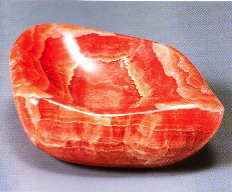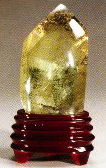
It’s not everyday that a person undertakes a renovation project, so naturally it pays to do some due diligence before starting one. Among the things I promised myself I’d do before reconfiguring any spaces or painting any walls was to research feng shui, the ancient Chinese art of placement and design, and apply some of its principles to the home I share with my husband, Anil. I have reservations about the efficacy of the system, since aspects of the practice are mystical and hard to measure by scientific standards. But one of my goals with our improvement projects is to explore design ideas from different cultures and take them for a test drive in my own home. So I’m willing to give feng shui a shot to see what happens.
One of the experts I consulted is Atsushi Shono, a Japanese feng shui master who lives and works in New Jersey. To start his analysis of our home, he asked for our address and a detailed floor plan, plus the complete spelling of my husband’s name and mine along with our birth dates. After I supplied him with this information, he determined the precise coordinates of our home and was able to ascertain what he calls the Taku-Ki fate, or essential energy, of our home itself, as well as the Honmeika fate, or essential energy my husband and I bring to our home. As it turns out, the Taku-Ki fate of our home is half good and half bad. It also turns out that, based on our birth dates, my husband and I also bring the exact same Homeika fate to our home, which according to Shono is very rare. With this information and the directional findings he gathered with a raban compass, a special feng shui tool, Shono offered suggestions for introducing colors, stones and objects that will enhance the good parts of our home’s energy, or what the Chinese call ch’i, and diminish the bad.
Thankfully, the same colors and stones are fortuitous for both my husband and me, keeping things simpler. For the most part, according to Shono, we need some crystals to eliminate negative energy posed by hollows in our apartment, which keep it from being shaped like a perfect rectangle or square (a feng shui ideal), along with a small water fountain and a few other remedies that should keep the positive energy flowing in our home. The practice of feng shui is closely linked with nature, so natural elements, such as wood, water and fire, also need to be placed properly in the home to maintain harmony. One quick tip Shono offered for our kitchen was to place a plant between the sink and the stove, which are located directly across from each other. “Water kills fire,” Shono told me. “But water feeds wood, which is represented by the plant, and wood feeds fire, so the plant between the water from the sink and the fire from the stove will create harmony.” Since I’m working with a strict budget he also prioritized the fixes to get me affordably started on the right path for good feng shui in our home.

Shono is the head of the U.S. branch of the International Power Stones Association and the International Feng Shui Association, two non-profit organizations based in Japan. He also operates a store in New Jersey called Feng Shui Stones, where you can purchase objects and certified gem stones that are said to improve the feng shui of your home (some of the stones were once displayed at the National Japanese Museum). The staff there will also provide consultations upon request.



